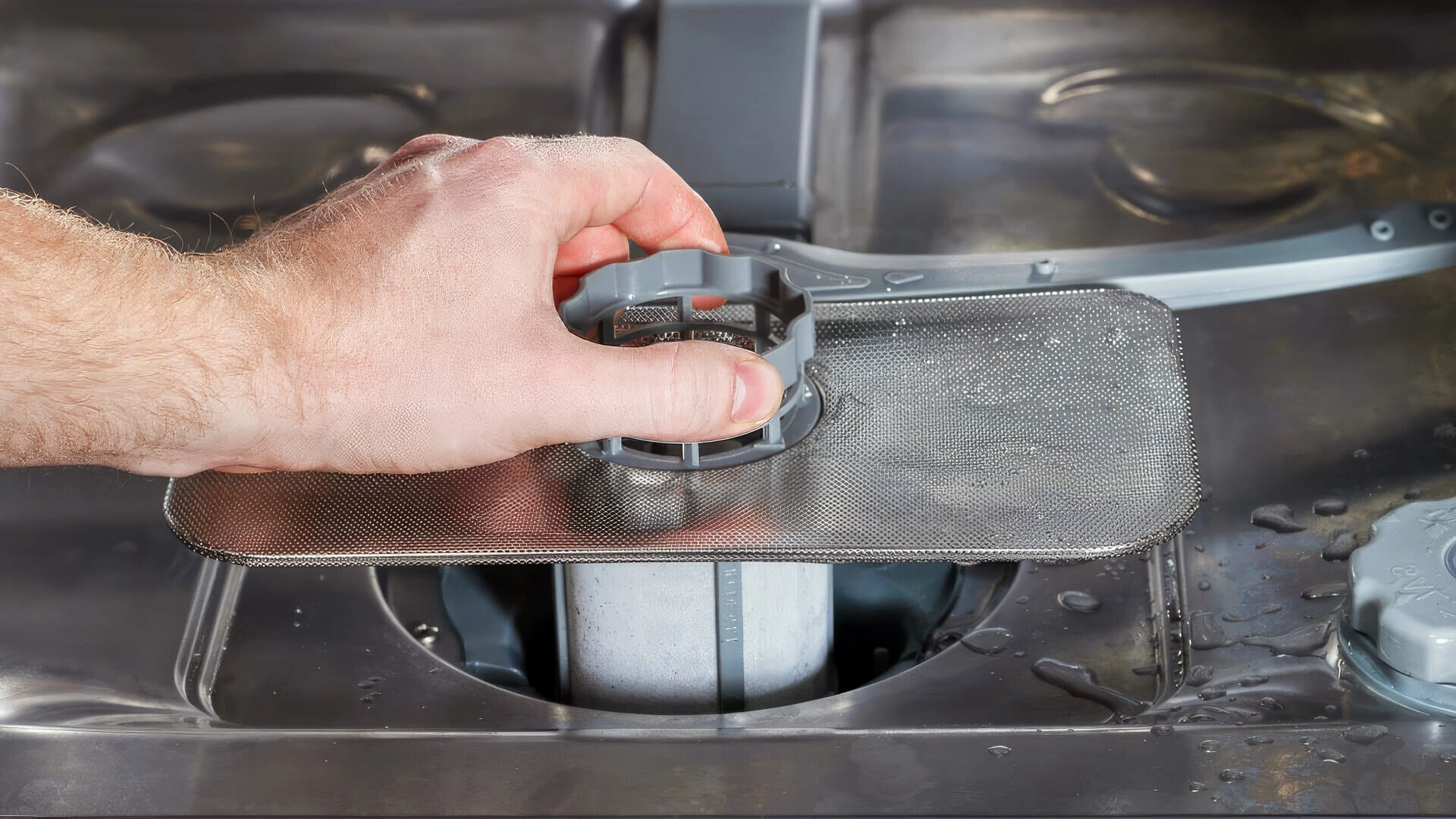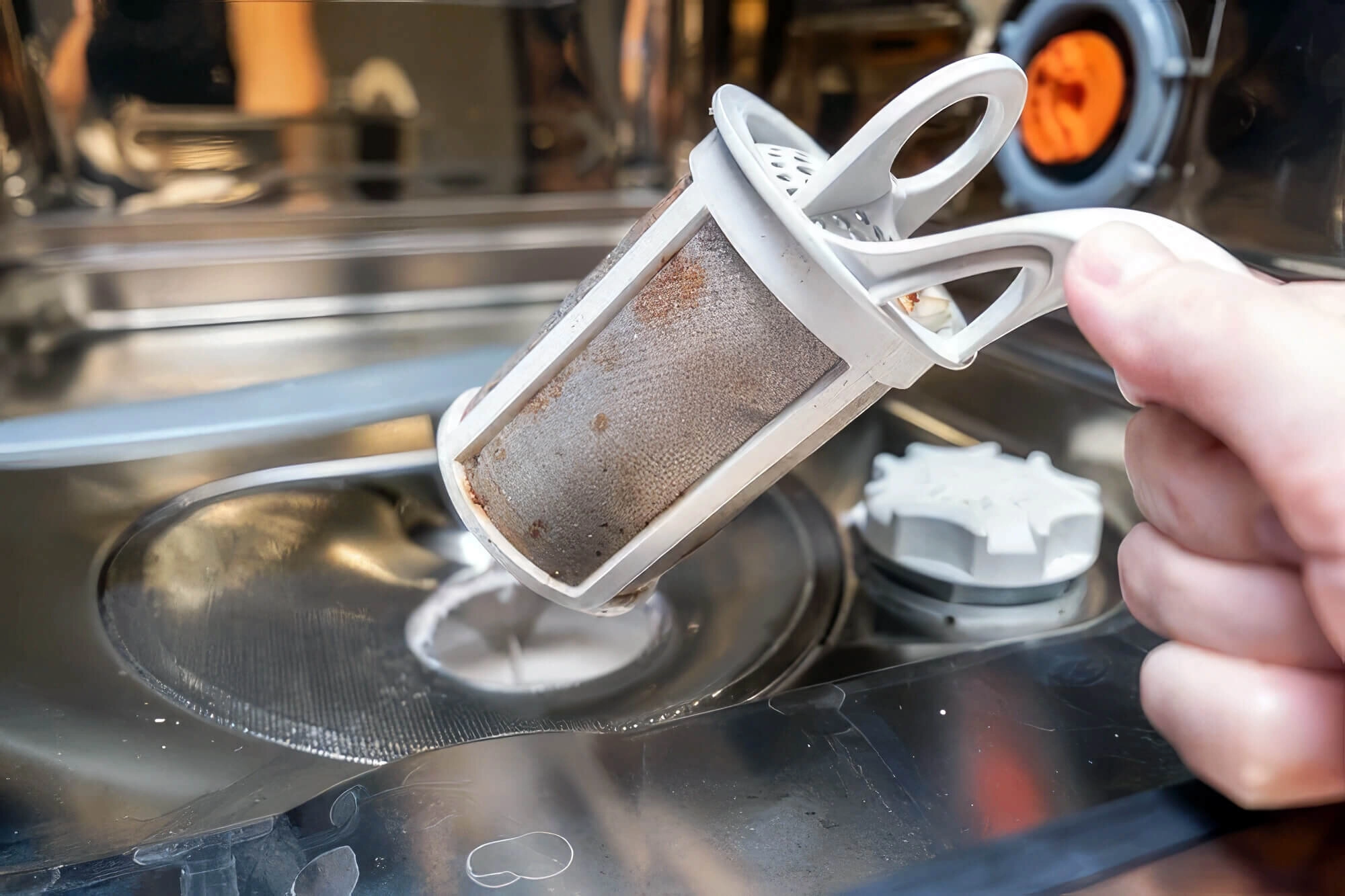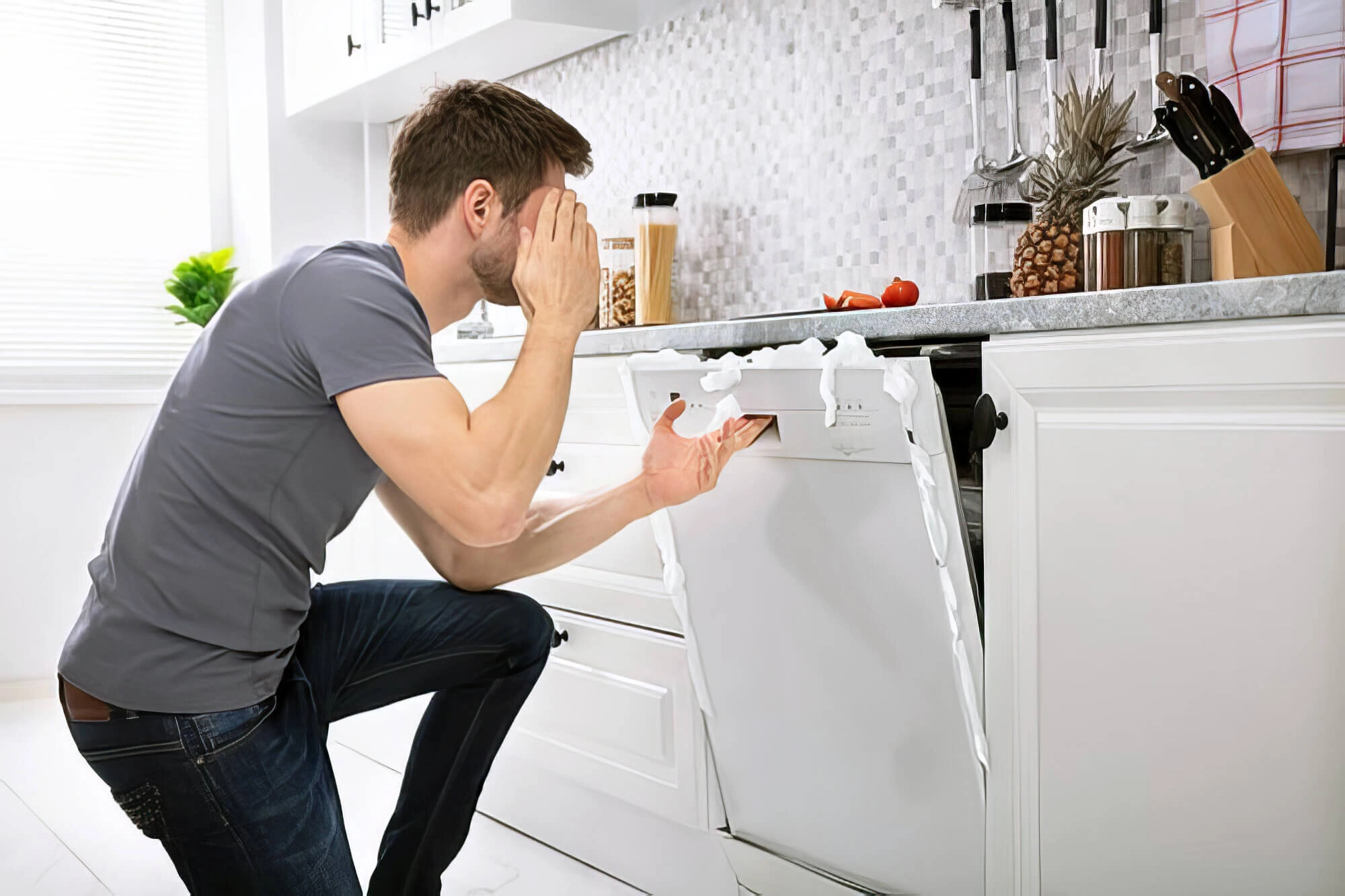The main reason your dishwasher won’t drain is usually an obstacle preventing the wastewater from flowing out . This blockage can be in your dishwasher parts, garbage disposal, or kitchen sink.
It’s a messy situation - you load your dishes into the dishwasher in a hurry and keep waiting for it to start draining, but it never does. The dirty standing water in the washer smells pungent.

If you’re in a similar spot, don’t panic. This article will help you find the root of the problem. Stay calm and fix any minor issues you find, and you’ll instantly see the drainage working again. So, let’s discuss troubleshooting your dishwasher and what to do when it doesn’t drain.
7 Steps To Take When Your Dishwasher Does Not Drain

1. Check The Dishwasher Filters
Most of the time, dishwashers don’t properly drain water because the dishwasher filters have a build-up of food debris . Thus, you should check them first and remove debris. You can locate the filter by leafing through the owner’s manual and finding the exact location per the diagrams.
If you find a dirty filter, hold it under a strong tap to clean off most of the grime. If this doesn’t work, your user manual will have more instructions for cleaning.
2. Use Baking Soda And Vinegar
A mixture of baking soda and vinegar dissolves most grime, cooking oil and grease in blocked drains and dishwashers. So, if you have a dishwasher that won’t drain, you can use your kitchen supplies and other natural ways and ingredients .
To create the solution, mix vinegar and soda in equal parts until you have enough liquid to pour into your dishwasher. Let the mixture stand in the dishwasher and wait for 20 minutes.
You’ll see it properly draining out after a while. When this happens, run your Rinse Dishwasher cycle after filling it with hot water. Now, you should be in the clear.
3. Use The Proper Loading Method
If you have a new dishwasher, you might need to gain experience loading the dishes. This improper placement halts the functions and doesn’t let your dishwasher drain.
So, go back to your user manual and check if you’re doing it right. Read the guide thoroughly, adhere to the details, and close the dishwasher door firmly afterwards.
4. Examine Your Garbage Disposal
A full garbage disposal can affect your dishwasher’s drainage. If the disposal is clogged, you’ll encounter drainage problems and cause damage because your dishwasher’s wastewater cannot flow smoothly.
Additionally, there may be a large air bubble in the dishwasher hose or drain pump. This is connected to your disposal and stops the steady water flow.
However, don’t fret because there’s an easy solution. Just turn on your garbage disposer and let it run for about a minute. Now, rerun your dishwasher, and you’ll find it draining properly.
Sometimes, the unit is old and beyond repair, just like your old plumbing . Know when to get a new garbage disposal unit to fix the problem.

5. Clear Obstructions In The Sink Air Gap
If you peer closely at the back edge of your sink, you’ll find a small cylinder. This is known as an air gap . Sometimes, a block between the air gap and the garbage disposal leads to drainage issues.
So, turn on your dishwasher and check if the air gap leaks. If it does, you’re dealing with a blockage.
You can clear it with the same kitchen solution as before. Mix baking soda and vinegar, unscrew the air gap cap, and pour the liquid. Now, wait a few minutes and rinse it with cold water, and your dishwasher will be functional again.
6. Inspect The Dishwasher
Sometimes, you have a clogged dishwasher tub or drain valve bracket because something too large is stuck there. This can be a broken crockery piece, spoons, or large food particles left on the plates. Thus, the unit fills up with standing water.
However, these suspects are also easy to spot because of their size. So, take a torch and open up your dishwasher. Shine the light at every nook and cranny to check if anything’s out of place. Devote special attention to the lower surface because most objects get stuck here.
If you find what’s causing the issue, gently remove it and try re-running the dishwasher. You may need professional help if it’s jammed in a way that’s too challenging or unsafe for you to remove.
7. Address Issues In Your Dishwasher Drain Hose
If you examine your kitchen sink drain, you’ll see a hose connecting it to the garbage disposal. The drainage problem might be because of the dirty water accumulated in this drain hose.
So, you need to detach it and perform a drain hose check . The most common test is to hold one end under the tap and see if water comes out of the other side or overflows. Other than this, you can also use a stiff brush to ensure no hose blockages.
Finally, when you’re putting it back into place, ensure that there are no folds or kinks that can obstruct water flow. Test your dishwasher again to see if cleaning the drain hose fixed it.

Your Blocked Dishwasher Solution
That’s all for our guide on why your dishwasher won’t drain! Now that you know the steps to inspect your dishwasher try to find the source of the drainage problem and fix it.
Most dishwashers stop draining because of a simple blockage or kink stopping its flow. So, always check the above aspects first when your dishwasher does not drain.
However, calling in a service technician is inevitable sometimes. If none of the tips above helped you, run the wash cycle in a quiet room and listen closely. In case you hear strange humming or clicking noises, it means there’s a deeper issue with the machine. In such cases, it’s better to contact a licensed plumber and tell them about your problem.
Here at Fixed Fast Plumbing , we’ve got highly-trained professionals to work on your blocked and broken dishwasher. Request a no-obligation quote, and we’ll have one of our best plumbers at your doorstep to provide you with plumbing solutions to all your plumbing needs, like your emergency blocked drains and dishwashers that don’t drain. Have a plumbing emergency? Our team are available 24/7 across Sydney!